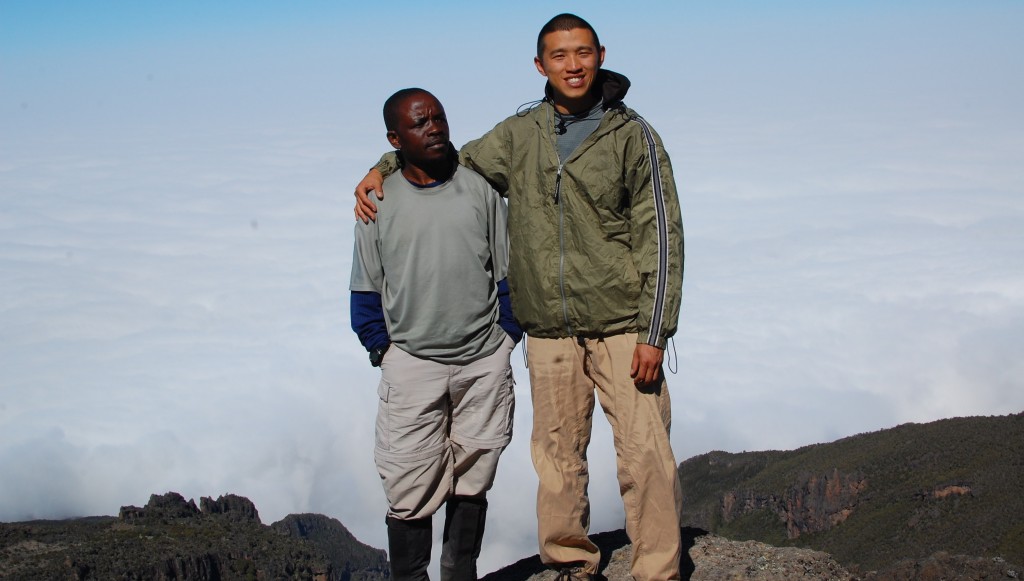I returned from a three-week adventure in Tanzania splitting time teaching at Good Hope Orphanage and Primary School, reaching the summit of Mount Kilimanjaro and speeding through the vast plains of the Serengeti. From my flight to Dar es Salaam to being seen off at the airport coming home to Toronto, I had the privilege to meet so many change makers in such short time; Allen, a Certified Prosthetist and Orthotist from United States working with World Medical Mission to train locals in prosthetics and orthotics in Kenya and Jill, Nicole, Apryl and Tanya from Canada, working for Sustainable Cities in Dar es Salaam on urban development projects with the municipal government were some of the fine folks working on incredible initiatives in Africa. In the next several blog posts I would like to share the stories of a few change makers I met along the way.
The first change maker I would like to introduce is Festo Mtui, my guide for 7-days as we journeyed through Kilimanjaro National Park. He’s been a guide for over 15 years and is very passionate about the national park as he, part of the Chaga people, grew up in the Kilimanjaro region. This World Heritage Site attracts over 40,000 visitors per year, which can create a solid waste management problem for the park if it’s not managed adequately.
It was very evident on the 2nd day of our trek that people (either locals or visitors) were leaving candy wrappers and plastic bottles along the way. At first I was guilty of walking past the litter and watching the determined Festo pick them up along the way sparked our discussions on education and environmental awareness. Although the park administration promotes Garbage-In Garbage-Out, the guides and porters however, have no incentive to follow through and in order to lighten their packs, many of the trash get thrown along the trail.
To become a certified Kilimanjaro guide one must have a solid knowledge of the many national park trails but nowhere in the curriculum are lessons on the environment and waste management. At the end of our daily 4 to 8 hour, Festo would remind his team of 5 wapiganaji, Kiswahili for warrior, the importance of keeping all waste until we reach the gates of the park.
On the night of the summit to Uhuru Peak, the tallest point in Africa at 5,895m (19,341ft) above sea-level, it took me and Festo 6 hours, starting around midnight to reach the top. At 6:12am we reached the peak and within minutes were graced with a beautiful sunrise. As the rays hit the glaciers I was stunned by its beauty but couldn’t help notice that someone carelessly left an empty champagne bottle at the peak.
The trek from base camp to our final camp we encountered the biggest piles of waste from exploded bags of garbage being thrown off to the side of the trail. Festo and I did our best to collect what we can along the way, filling our own packs with garbage. After spending 7-days on the trails of Kilimanjaro, I can see why Festo is so passionate about the national park and the condition that it is in and although he is just one person, what he is doing will inspire others on the trail to do the same. This reminds me of a short story that I’ll end my first post with:
A young girl was walking along a beach upon which thousands of starfish had been washed up during a terrible storm. When she came to each starfish, she would pick it up, and throw it back into the ocean. People watched her with amusement.
She had been doing this for some time when a man approached her and said, “Little girl, why are you doing this? Look at this beach! You can’t save all these starfish. You can’t begin to make a difference!”
The girl seemed crushed, suddenly deflated. But after a few moments, she bent down, picked up another starfish, and hurled it as far as she could into the ocean. Then she looked up at the man and replied, “Well, I made a difference to that one!”
The old man looked at the girl inquisitively and thought about what she had done and said. Inspired, he joined the little girl in throwing starfish back into the sea. Soon others joined, and all the starfish were saved. – adapted from the Star Thrower by Loren C. Eiseley
Have you had a similar experience while hiking on the trails or around your neighbourhood? What did you do about it? Share your stories here!

If you’re interested in creating opportunities for the guides and porters of Kilimanjaro, here are two organizations: Kilimanjaro Porters Assistance Project and Kilimanjaro Guide Scholarship Foundation.

